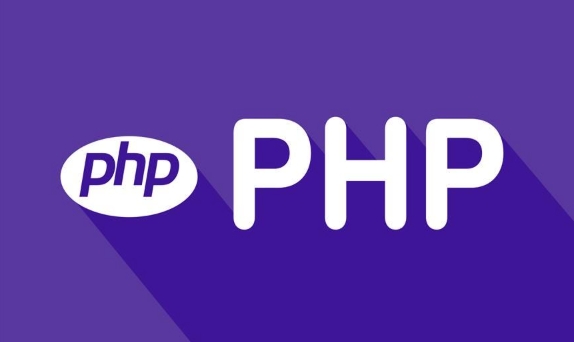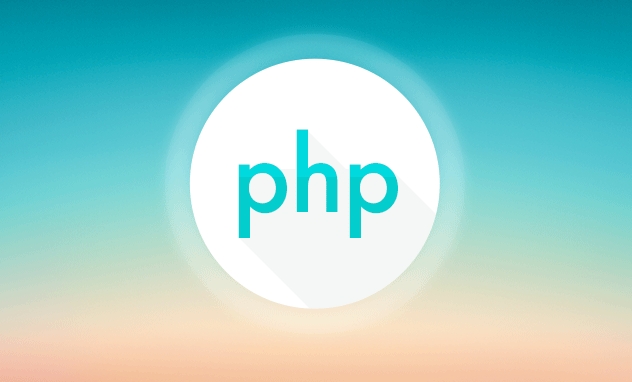To quickly build a PHP environment, you can choose integrated tools such as XAMPP or MAMP, 1. Determine the environment selection: XAMPP and MAMP are suitable for beginners; 2. Install PHP: Download and decompress, configure environment variables and php.ini; 3. Used with a web server: Apache is easier to use, and Nginx is suitable for high concurrency; 4. Debugging problems: Turn on error reports, check logs to check blank pages, database connection failures, or extension loading exceptions.

PHP is a widely used backend language, and many people use it when building websites or developing web applications. If you are new to PHP or want to re-examine the installation and configuration process, this article will start from the most basic to help you quickly set up an available PHP environment.

How to choose a local development environment?
Before you start, determine in which environment you want to run PHP. The most common options are:
- XAMPP : Suitable for beginners, integrating Apache, MySQL, PHP and some management tools, one-click installation.
- MAMP : Commonly used by Mac users, simple operation and friendly interface.
- WAMP/Laragon (Windows) and MAMP/AMPPS (Mac) are both good choices.
- Docker : More advanced, suitable for situations where multiple projects require different PHP versions or extensions.
Newbie users are advised to prioritize XAMPP or MAMP because they have low configuration thresholds and complete documentation for beginners.

Basic steps to install PHP
If you don't want to use the integration package, you can also install PHP separately. The following is the general procedure for manual installation:
- Go to php.net to download the PHP package of the corresponding system.
- Decompress and place it in a suitable position, such as
/usr/local/phporC:\php. - Configure environment variables so that the terminal can directly recognize the
phpcommand. - Copy
php.ini-developmentorphp.ini-productionfile and rename it tophp.inito configure PHP behavior. - Test whether the installation is successful: Enter
php -von the command line, and if you can see the version number description, it will be OK.
Sometimes you will find that the command line prompts php cannot be found after installation. At this time, you should check whether the system PATH contains the PHP path.

How to run PHP with a web server?
PHP alone is not enough, you also need a web server to make it really run. Common combinations are:
- Apache mod_php
- Nginx PHP-FPM
If it is local development, Apache is easier to get started, and many integrated environments are also Apache by default. Nginx performs better in high concurrency scenarios and is suitable for deployment in production environments.
For example, if you are using XAMPP, Apache is already equipped. You just need to put the PHP file into htdocs http://localhost/你的文件名.php .
Debugging and FAQ handling
The easiest way to debug PHP is to open the error report. Find the following two lines in php.ini and set as:
display_errors = On error_reporting = E_ALL
This will display error messages on the page, which will facilitate troubleshooting.
Frequently asked questions include:
- Page blank: It may be a syntax error or an error display is not enabled.
- Unable to connect to the database: Check whether the database service is started and whether the username and password are correct.
- Extension loading failed: Remember to enable the extension you need in
php.ini, such asextension=mysqli.
If you encounter strange problems, you can check the logs first. Usually Apache/Nginx and PHP have their own log files, and the path is usually in the logs directory.
Basically that's it. The whole process seems a bit too many, but in fact, it is not difficult to do it step by step. The key is not to panic when something goes wrong, look at the logs and check the configuration, and you will get familiar with it slowly.
The above is the detailed content of The Ultimate PHP Setup Guide. For more information, please follow other related articles on the PHP Chinese website!

Hot AI Tools

Undress AI Tool
Undress images for free

Undresser.AI Undress
AI-powered app for creating realistic nude photos

AI Clothes Remover
Online AI tool for removing clothes from photos.

Clothoff.io
AI clothes remover

Video Face Swap
Swap faces in any video effortlessly with our completely free AI face swap tool!

Hot Article

Hot Tools

Notepad++7.3.1
Easy-to-use and free code editor

SublimeText3 Chinese version
Chinese version, very easy to use

Zend Studio 13.0.1
Powerful PHP integrated development environment

Dreamweaver CS6
Visual web development tools

SublimeText3 Mac version
God-level code editing software (SublimeText3)

Hot Topics
 How to use PHP to build social sharing functions PHP sharing interface integration practice
Jul 25, 2025 pm 08:51 PM
How to use PHP to build social sharing functions PHP sharing interface integration practice
Jul 25, 2025 pm 08:51 PM
The core method of building social sharing functions in PHP is to dynamically generate sharing links that meet the requirements of each platform. 1. First get the current page or specified URL and article information; 2. Use urlencode to encode the parameters; 3. Splice and generate sharing links according to the protocols of each platform; 4. Display links on the front end for users to click and share; 5. Dynamically generate OG tags on the page to optimize sharing content display; 6. Be sure to escape user input to prevent XSS attacks. This method does not require complex authentication, has low maintenance costs, and is suitable for most content sharing needs.
 How to use PHP combined with AI to achieve text error correction PHP syntax detection and optimization
Jul 25, 2025 pm 08:57 PM
How to use PHP combined with AI to achieve text error correction PHP syntax detection and optimization
Jul 25, 2025 pm 08:57 PM
To realize text error correction and syntax optimization with AI, you need to follow the following steps: 1. Select a suitable AI model or API, such as Baidu, Tencent API or open source NLP library; 2. Call the API through PHP's curl or Guzzle and process the return results; 3. Display error correction information in the application and allow users to choose whether to adopt it; 4. Use php-l and PHP_CodeSniffer for syntax detection and code optimization; 5. Continuously collect feedback and update the model or rules to improve the effect. When choosing AIAPI, focus on evaluating accuracy, response speed, price and support for PHP. Code optimization should follow PSR specifications, use cache reasonably, avoid circular queries, review code regularly, and use X
 PHP creates a blog comment system to monetize PHP comment review and anti-brush strategy
Jul 25, 2025 pm 08:27 PM
PHP creates a blog comment system to monetize PHP comment review and anti-brush strategy
Jul 25, 2025 pm 08:27 PM
1. Maximizing the commercial value of the comment system requires combining native advertising precise delivery, user paid value-added services (such as uploading pictures, top-up comments), influence incentive mechanism based on comment quality, and compliance anonymous data insight monetization; 2. The audit strategy should adopt a combination of pre-audit dynamic keyword filtering and user reporting mechanisms, supplemented by comment quality rating to achieve content hierarchical exposure; 3. Anti-brushing requires the construction of multi-layer defense: reCAPTCHAv3 sensorless verification, Honeypot honeypot field recognition robot, IP and timestamp frequency limit prevents watering, and content pattern recognition marks suspicious comments, and continuously iterate to deal with attacks.
 PHP calls AI intelligent voice assistant PHP voice interaction system construction
Jul 25, 2025 pm 08:45 PM
PHP calls AI intelligent voice assistant PHP voice interaction system construction
Jul 25, 2025 pm 08:45 PM
User voice input is captured and sent to the PHP backend through the MediaRecorder API of the front-end JavaScript; 2. PHP saves the audio as a temporary file and calls STTAPI (such as Google or Baidu voice recognition) to convert it into text; 3. PHP sends the text to an AI service (such as OpenAIGPT) to obtain intelligent reply; 4. PHP then calls TTSAPI (such as Baidu or Google voice synthesis) to convert the reply to a voice file; 5. PHP streams the voice file back to the front-end to play, completing interaction. The entire process is dominated by PHP to ensure seamless connection between all links.
 PHP realizes commodity inventory management and monetization PHP inventory synchronization and alarm mechanism
Jul 25, 2025 pm 08:30 PM
PHP realizes commodity inventory management and monetization PHP inventory synchronization and alarm mechanism
Jul 25, 2025 pm 08:30 PM
PHP ensures inventory deduction atomicity through database transactions and FORUPDATE row locks to prevent high concurrent overselling; 2. Multi-platform inventory consistency depends on centralized management and event-driven synchronization, combining API/Webhook notifications and message queues to ensure reliable data transmission; 3. The alarm mechanism should set low inventory, zero/negative inventory, unsalable sales, replenishment cycles and abnormal fluctuations strategies in different scenarios, and select DingTalk, SMS or Email Responsible Persons according to the urgency, and the alarm information must be complete and clear to achieve business adaptation and rapid response.
 How to use PHP to combine AI to generate image. PHP automatically generates art works
Jul 25, 2025 pm 07:21 PM
How to use PHP to combine AI to generate image. PHP automatically generates art works
Jul 25, 2025 pm 07:21 PM
PHP does not directly perform AI image processing, but integrates through APIs, because it is good at web development rather than computing-intensive tasks. API integration can achieve professional division of labor, reduce costs, and improve efficiency; 2. Integrating key technologies include using Guzzle or cURL to send HTTP requests, JSON data encoding and decoding, API key security authentication, asynchronous queue processing time-consuming tasks, robust error handling and retry mechanism, image storage and display; 3. Common challenges include API cost out of control, uncontrollable generation results, poor user experience, security risks and difficult data management. The response strategies are setting user quotas and caches, providing propt guidance and multi-picture selection, asynchronous notifications and progress prompts, key environment variable storage and content audit, and cloud storage.
 Beyond the LAMP Stack: PHP's Role in Modern Enterprise Architecture
Jul 27, 2025 am 04:31 AM
Beyond the LAMP Stack: PHP's Role in Modern Enterprise Architecture
Jul 27, 2025 am 04:31 AM
PHPisstillrelevantinmodernenterpriseenvironments.1.ModernPHP(7.xand8.x)offersperformancegains,stricttyping,JITcompilation,andmodernsyntax,makingitsuitableforlarge-scaleapplications.2.PHPintegrateseffectivelyinhybridarchitectures,servingasanAPIgateway
 PHP integrated AI speech recognition and translator PHP meeting record automatic generation solution
Jul 25, 2025 pm 07:06 PM
PHP integrated AI speech recognition and translator PHP meeting record automatic generation solution
Jul 25, 2025 pm 07:06 PM
Select the appropriate AI voice recognition service and integrate PHPSDK; 2. Use PHP to call ffmpeg to convert recordings into API-required formats (such as wav); 3. Upload files to cloud storage and call API asynchronous recognition; 4. Analyze JSON results and organize text using NLP technology; 5. Generate Word or Markdown documents to complete the automation of meeting records. The entire process needs to ensure data encryption, access control and compliance to ensure privacy and security.






